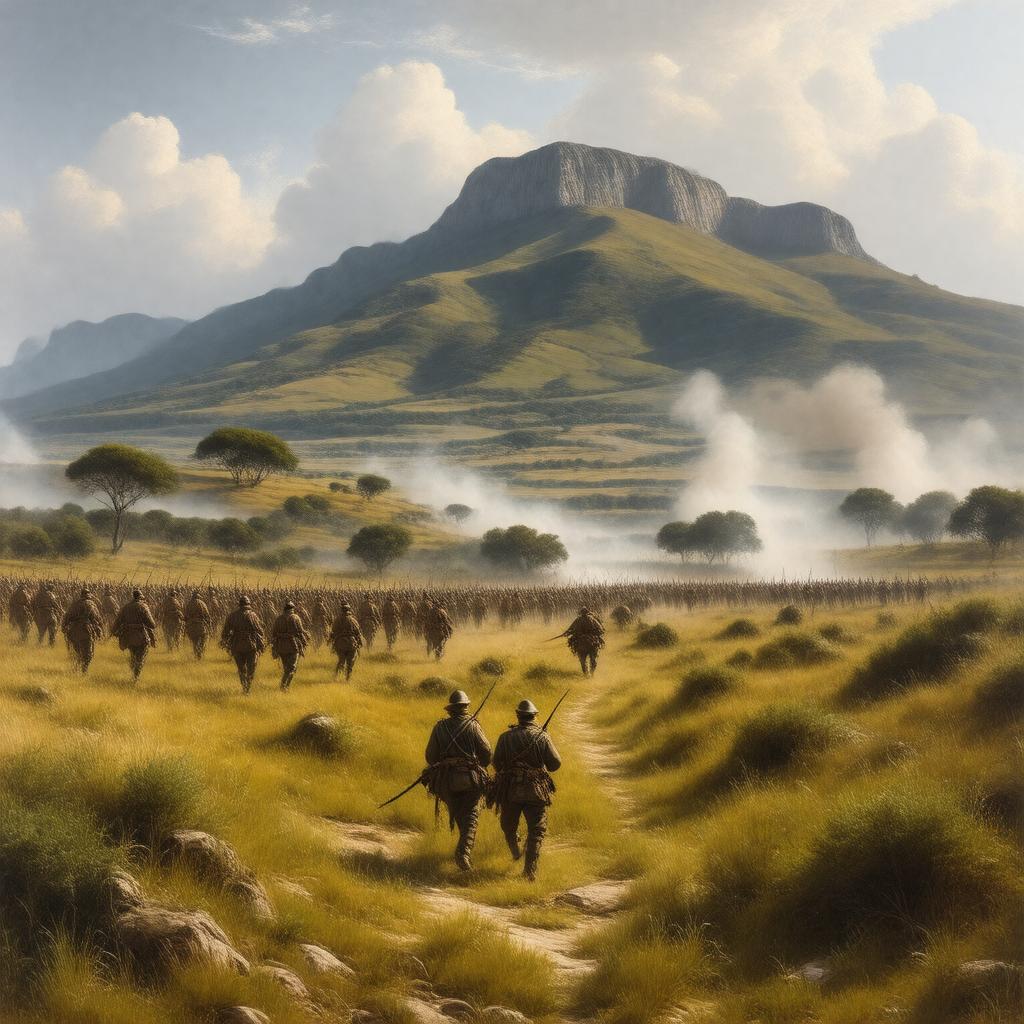Prompt
"Painting of a 19th-century landscape with a distant view of British and Boer soldiers clashing at the Battle of Majuba Hill, with a prominent hill in the background and a sprawling South African savannah in the foreground, during the First Boer War, also known as the Transvaal War, in 1881, in a realistic and historically accurate style."

